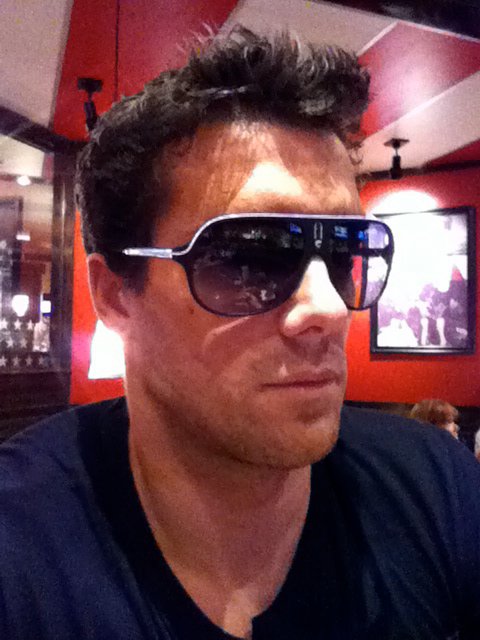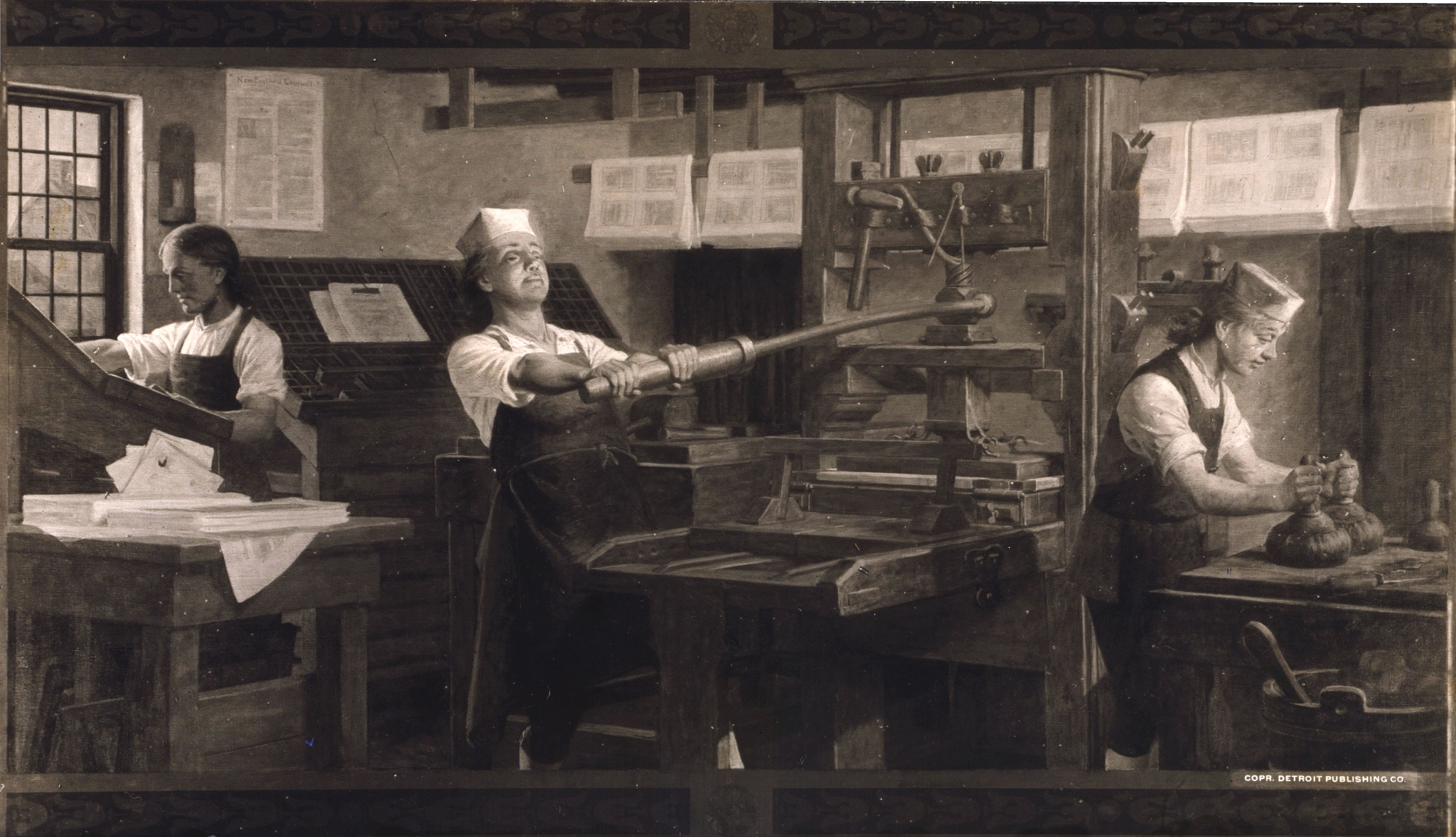|
Bifocals
Bifocals are eyeglasses with two distinct optical powers correcting vision at both long and short distances. Bifocals are commonly prescribed to people with presbyopia who also require a correction for myopia, hyperopia, and/or astigmatism. History Benjamin Franklin is generally credited with the invention of bifocals. He decided to saw his lenses in half so he could read the lips of speakers of French at court, the only way he could understand them. Historians have produced some evidence to suggest that others may have come before him in the invention; however, a correspondence between George Whatley and John Fenno, editor of the '' Gazette of the United States'', suggested that Franklin had indeed invented bifocals, and perhaps 50 years earlier than had been originally thought. On the contrary, the College of Optometrists concluded: :Unless further evidence emerges all we can say for certain is that Franklin was one of the first people to wear split bifocals and this act of ... [...More Info...] [...Related Items...] OR: [Wikipedia] [Google] [Baidu] |
Corrective Lenses
A corrective lens is a transmissive optical device that is worn on the eye to improve visual perception. The most common use is to treat refractive errors: myopia, hypermetropia, astigmatism, and presbyopia. Glasses or "spectacles" are worn on the face a short distance in front of the eye. Contact lenses are worn directly on the surface of the eye. Intraocular lenses are surgically implanted most commonly after cataract removal but can be used for purely refractive purposes. Prescription of corrective lenses Corrective lenses are typically prescribed by an ophthalmologist or an optometrist. The prescription consists of all the specifications necessary to make the lens. Prescriptions typically include the power specifications of each lens (for each eye). Strengths are generally prescribed in quarter- diopter steps (0.25 D), because most people cannot generally distinguish between smaller increments (e.g., eighth-diopter steps / 0.125 D). The use of improper corr ... [...More Info...] [...Related Items...] OR: [Wikipedia] [Google] [Baidu] |
Glasses
Glasses, also known as eyeglasses (American English), spectacles (Commonwealth English), or colloquially as specs, are vision eyewear with clear or tinted lenses mounted in a frame that holds them in front of a person's eyes, typically utilizing a bridge over the nose and hinged arms, known as temples or temple pieces, that rest over the ears for support. Glasses are typically used for vision correction, such as with reading glasses and glasses used for nearsightedness; however, without the specialized lenses, they are sometimes used for cosmetic purposes. Safety glasses are eye protection, a form of personal protective equipment ( PPE) that are worn by workers around their eyes for protection. Safety glasses act as a shield to protect the eyes from any type of foreign debris that may cause irritation or injury; these glasses may have protection on the sides of the eyes as well as in the lenses. Some types of safety glasses are used to protect against visible and n ... [...More Info...] [...Related Items...] OR: [Wikipedia] [Google] [Baidu] |
Thermonectus Marmoratus
''Thermonectus marmoratus'' is a relatively colorful North American species of Dytiscidae, diving beetle known by the common names sunburst diving beetle and yellow-spotted diving beetle. The behavior of this diving beetle has been compared to a scuba diver, since it carries with it a bubble of air as it dives down into the water. Its aquatic larval stage was the first ever recorded use of bifocals in the animal world. The beetle uses in its principal eyes two retinas and two distinct focal planes that are substantially separated, in the manner of bifocals to switch their vision from up-close to distance, for easy and efficient capture of their prey. Because of their bright aposematic colors, they are often displayed in zoos, sometimes together with ''Abedus herberti'' (also found together in the wild) and other aquatic beetles. Physical description The adult beetle has a length of , with females slightly larger than males. The sunburst diving beetle has a black and streamlined ... [...More Info...] [...Related Items...] OR: [Wikipedia] [Google] [Baidu] |
Benjamin Franklin
Benjamin Franklin (April 17, 1790) was an American polymath: a writer, scientist, inventor, statesman, diplomat, printer, publisher and Political philosophy, political philosopher.#britannica, Encyclopædia Britannica, Wood, 2021 Among the most influential intellectuals of his time, Franklin was one of the Founding Fathers of the United States; a Committee of Five, drafter and signer of the United States Declaration of Independence, Declaration of Independence; and the first United States Postmaster General, postmaster general. Born in the Province of Massachusetts Bay, Franklin became a successful Early American publishers and printers, newspaper editor and printer in Philadelphia, the leading city in the colonies, publishing ''The Pennsylvania Gazette'' at age 23. He became wealthy publishing this and ''Poor Richard's Almanack'', which he wrote under the pseudonym "Richard Saunders". After 1767, he was associated with the ''Pennsylvania Chronicle'', a newspaper known for it ... [...More Info...] [...Related Items...] OR: [Wikipedia] [Google] [Baidu] |
Eyewear
Eyewear is a term used to refer to all devices worn over both of a person's eyes, or occasionally a single eye, for one or more of a variety of purposes. Though historically used for vision improvement and correction, eyewear has also evolved into eye protection, for fashion and aesthetic purposes, and starting in the late 20th century, computers and virtual reality. The primary intention of wearing eyewear can vary based on the need or desire of the wearer. Eyewear comes in different forms such as Glasses, Contact lenses, Sunglasses and many more. . Eyewear (such as glasses and contact lenses) helps most people see clearer or read. Eyewear also can be used for protection, such as sunglasses which protect wearers from the Sun's ultraviolet rays which are damaging to the eyes when unprotected, eyepatches to protect injured eyes from further damage, or goggles which protect the wearer's eyes from debris, water and other chemicals. Variants of eyewear can conversely inhibit or disable ... [...More Info...] [...Related Items...] OR: [Wikipedia] [Google] [Baidu] |
Presbyopia
Presbyopia is a physiological insufficiency of optical Accommodation (vertebrate eye), accommodation associated with the aging of the human eye, eye; it results in progressively worsening ability to focus clearly on close objects. Also known as age-related farsightedness (or as age-related long sight in the UK), it affects many adults over the age of 40. A common sign of presbyopia is difficulty in reading small print, which results in having to hold reading material farther away. Other symptoms associated can be headaches and eyestrain. Different people experience different degrees of problems. Other types of refractive errors may exist at the same time as presbyopia. This condition is similar to hypermetropia or far-sightedness, which starts in childhood and exhibits similar symptoms of blur in the vision for close objects. Presbyopia is a typical part of the aging process. It occurs due to age-related changes in the Lens (anatomy), lens (decreased elasticity and increased h ... [...More Info...] [...Related Items...] OR: [Wikipedia] [Google] [Baidu] |
Trifocal Lenses
Trifocals are eyeglasses with lenses that have three regions which correct for distance, intermediate (arm's length), and near vision. John Isaac Hawkins developed the trifocal lens in 1827. Trifocals are mostly used by people with advanced presbyopia who have been prescribed 2 diopters or more of reading addition. The intermediate addition is normally half the reading addition. So, for someone with a distance prescription of −4 diopters and a reading addition of +3, the reading portion of their trifocals would have a net power of −1, and the intermediate segment would be −2.5 diopters. Trifocal lenses are made in similar styles to bifocals, but with an additional segment for intermediate vision above the reading section. A common style is the 7×28 flat-top or D-shaped segment, 28 mm wide, with a 7 mm high intermediate segment. Larger intermediate segments are available, and are particularly useful for people who spend a lot of time using computers. Trifocals are ... [...More Info...] [...Related Items...] OR: [Wikipedia] [Google] [Baidu] |
Binocular Rivalry
Binocular rivalry is a phenomenon of visual perception in which perception alternates between different images presented to each human eye, eye. When one image is presented to one eye and a very different image is presented to the other (also known as dichoptic presentation), instead of the two images being seen superimposed, one image is seen for a few moments, then the other, then the first, and so on, stochastic, randomly for as long as one cares to look. For example, if a set of vertical lines is presented to one eye, and a set of horizontal lines to the same region of the retina of the other, sometimes the vertical lines are seen with no trace of the horizontal lines, and sometimes the horizontal lines are seen with no trace of the vertical lines. At transitions, brief, unstable composites of the two images may be seen. For example, the vertical lines may appear one at a time to obscure the horizontal lines from the left or from the right, like a traveling wave, switching sl ... [...More Info...] [...Related Items...] OR: [Wikipedia] [Google] [Baidu] |
Louis De Wecker
Louis de Wecker (29 September 1832 – 24 January 1906) was a French ophthalmologist born in Frankfurt am Main, Germany. He studied medicine in Würzburg, Berlin, Vienna and Paris, earning doctorates from Würzburg (1855) and Paris (1861). From 1862 he maintained a popular ophthalmology clinic in Paris. In 1867 he performed an enucleation of the eye of Léon Gambetta. His name is associated with "de Wecker scissors", which are small sharp-pointed scissors used for intraocular surgery of the iris and lens capsule. Dr. José Rizal (1861-1896), martyr and national hero of the Philippines, completed his ophthalmological training under Professor Louis de Wecker in Paris in 1885. Selected writings * ''Traité des maladies du fond de l'oeil et Atlas d'ophthalmoscopie'', 1870 with Eduard Jäger von Jaxtthal; (Treatise on maladies of the fundus of the eye and an atlas of ophthalmoscopy). * ''De l'iridotomie'', 1873 ( Iridotomy). * ''Échelle métrique pour mesurer l'acuité visue ... [...More Info...] [...Related Items...] OR: [Wikipedia] [Google] [Baidu] |
Binocular Vision
Binocular vision is seeing with two eyes. The Field_of_view, field of view that can be surveyed with two eyes is greater than with one eye. To the extent that the visual fields of the two eyes overlap, #Depth, binocular depth can be perceived. This allows objects to be recognized more quickly, camouflage to be detected, spatial relationships to be perceived more quickly and accurately (#Stereopsis, stereopsis) and perception to be less susceptible to optical illusions, optical illusions. In secion #Medical, Medical attention is paid to the occurrence, defects and sharpness of binocular vision. In section #Biological, Biological the occurrence of binocular vision in animals is described. Geometric terms When the left eye (LE) and the right eye (RE) observe two objects X and Y, the following concepts are important:Krol J.D.(1982),"Perceptual ghosts in stereopsis, a ghosly problem in binocular vision", PhD thesis ISBN 90-9000382-7.Koenderink J.J.;van Doorn A.J. (1976) "Geometry of ... [...More Info...] [...Related Items...] OR: [Wikipedia] [Google] [Baidu] |
Mosquito
Mosquitoes, the Culicidae, are a Family (biology), family of small Diptera, flies consisting of 3,600 species. The word ''mosquito'' (formed by ''Musca (fly), mosca'' and diminutive ''-ito'') is Spanish and Portuguese for ''little fly''. Mosquitoes have a slender segmented body, one pair of wings, three pairs of long hair-like legs, and specialized, highly elongated, piercing-sucking mouthparts. All mosquitoes drink nectar from flowers; females of some species have in addition adapted to drink blood. The group diversified during the Cretaceous period. Evolutionary biology, Evolutionary biologists view mosquitoes as micropredators, small animals that Parasitism, parasitise larger ones by drinking their blood without immediately killing them. Parasitology, Medical parasitologists view mosquitoes instead as Disease vector, vectors of disease, carrying protozoan parasites or bacterial or virus, viral pathogens from one Host (biology), host to another. The mosquito life cycle cons ... [...More Info...] [...Related Items...] OR: [Wikipedia] [Google] [Baidu] |






